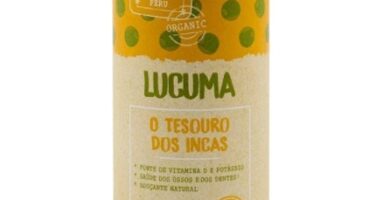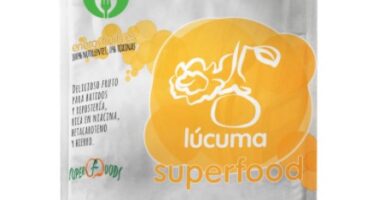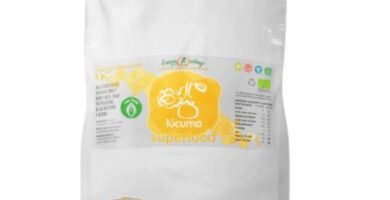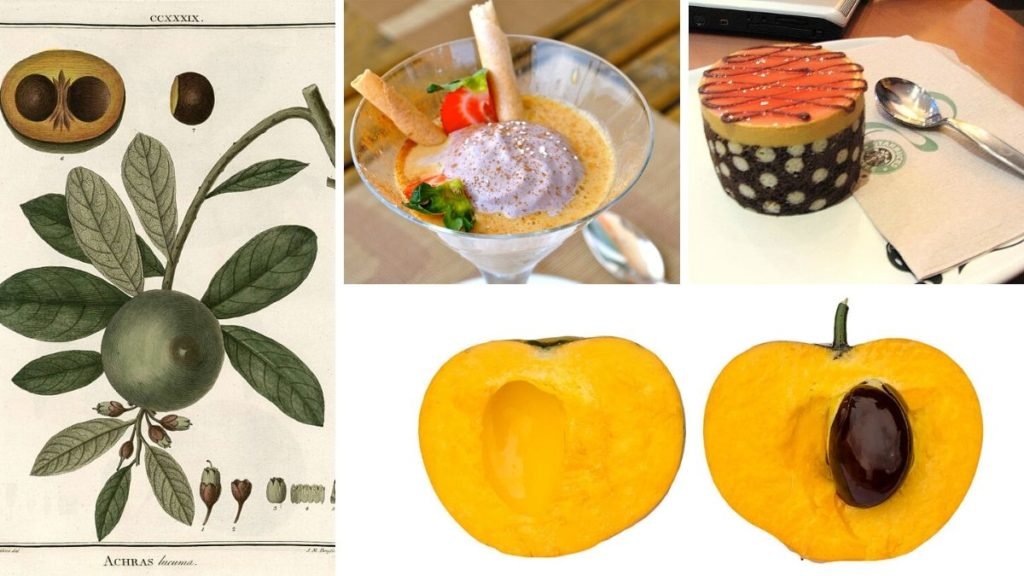
Tree, fruit, characteristics, nutritional value, recipes and contraindications
Scientific name
The scientific name of lucuma is Pouteria lucuma; it is also identified as Pouteria obovata or Pouteria bifera. It belongs to the Sapotaceae family; genus Pouteria; species: Lucuma (León, 2000).

However, the genetic diversity is so broad in Pouteria that it is very difficult to establish consistent differences among the ‘species’ of certain groups (León, 2000: p.171).
Products with lucuma to buy online!
Origin
This ancestral fruit is native to the Andean valleys of Peru. According to some historians, its use in the diet of the culture of pre-Inca populations has been corroborated through pictorial representations.
The word lucuma comes from the Quechua phrase Iluku uma which means old man’s head. It is a flagship product of Peru that grows in the Amazon, on the coast, and in the foothills of the Andes mountain range. There are more than forty varieties in the country (Super Foods Peru, 2020).
It is also grown in Chile and Ecuador, although its most significant production is in Peru, which alone accounts for around 88% of world production (Solís Aguilar, 2015).
Characteristics of the lucuma tree
The lúcumo is a perennial tree that can reach up to 20 meters in height.
The fruit is generally a drupe; its cultivars are spherical or ellipsoidal fruits covered with a green skin before it ripens, changing to brown with its maturation.

The pulp of the lucuma is soft and aromatic, yellow-orange in color, and with a pleasant, very sweet flavor in certain cultivars (León, 2000).
Nutritional value
The most common way to consume lucuma is as a freeze-dried powder or flour (Superalimentos.pro).
The nutritional composition for every 100g of lucuma flour is: water (9.3g); energy value (329 cal.); protein (4g); fiber (2.3g); lipids (2.4g); ashes (2.3g); calcium (92mg); phosphorus (186mg); iron (4.6mg); carotene (0mg); thiamin (0.2mg); niacin (0mg); ascorbic acid (11.6mg); and riboflavin (0.3mg) (Super Foods Peru, 2020).
How is lucuma consumed?
Its use in fresh or industrialized form in desserts, jams, smoothies, ice cream and other foods is very widespread in Peru.

According to Solís Aguilar (2015), the main difference between lucuma pulp and flour is that the former must be frozen to be marketed (preserving its organoleptic properties and extending its shelf life) and represents a higher long-term cost compared with the flour.
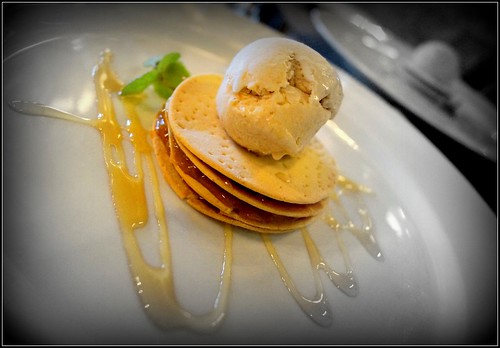
To obtain the flour, the fruit is dried and pulverized, making it more suitable for export.
To distribute and purchase the product, online channels may be used, which can be very efficient and less expensive.
Properties and benefits of lucuma
- The beta-carotene present in lucuma (in pulp) is an antioxidant that has beneficial effects for the prevention of heart attacks; it also acts on cell regeneration and growth and improves the immune system (Solís Aguilar, 2015).
- Likewise, thanks to its high beta-carotene content, it protects the skin from UV rays, preventing premature aging. It is especially effective against herpes and warts.
- Given its content of vitamin B3 (in the pulp), it is a powerful natural energizer and combats depression. It acts to stimulate the nervous system and reduce fatigue. It also helps reduce cholesterol and triglyceride levels in the blood.
- It also regulates the concentration of glucose in the blood, contributing to the proper metabolism of carbohydrates and, therefore, assisting with the control of diabetes.

Contraindications
There are no recent scientific studies that show contraindications for health with the consumption of lucuma. However, it should be used in moderation to avoid effects such as insomnia or stress, given its energizing properties. Likewise, it is recommended to consult a doctor in cases of depression, since lucuma can interact with the active ingredients of anti-depression medication and cause adverse effects.
The recommended dosage of lucuma is 15 grams per day (not to exceed 50 grams per day); in this way, its consumption is very safe even in the case of pregnant and lactating women (Superalimentos.pro, 2020).
Some recipes with lucuma (Hernández, 2012)
1. lucuma mousse
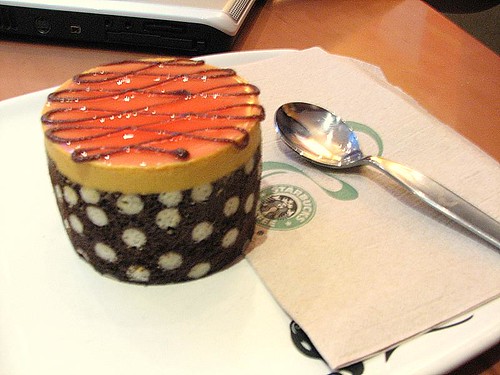
Ingredients
1 can of very cold evaporated milk
1-1/2 cups liquid whipping cream (cold)
2 sachets of unflavored gelatin
1 pot of lucuma puree (400 grams)
4 tablespoons of cold water
Preparation
In a cup place the 4 tablespoons of water, sprinkle the gelatin powder and stir. Separately, beat the evaporated milk until doubled in size, then add the cream until firm, mixing with a circular motion. Add the lucuma puree and continue beating. Heat the gelatin until it is well dissolved and then add to the mixture and beat at low speed. Pour this preparation into a mold and refrigerate for at least two hours before serving.
2. lucuma ice cream
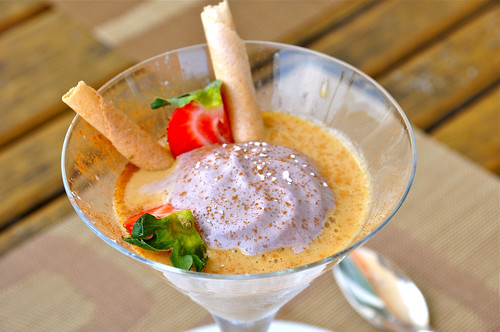
Ingredients
500 grams of lucuma pulp
3/4 cup of cold water
200 grams of granulated sugar
1 can of evaporated milk
5 egg yolks
120 grams of sugar
2 cups of milk
190 grams of instant powder for Chantilly
Preparation
Blend the lucuma with the water and sugar, then strain; cook on low heat, without boiling, then turn off and set aside. English sauce: Mix the evaporated milk with the egg and the sugar; cook on low heat, without bringing it to a boil, then set aside and let cool. Whipped cream: mix the egg yolks, sugar, and milk with a wire whisk; freeze for 10 minutes and beat with a mixer to increase volume. Mix together the three preparations and freeze, covering the final mixture.
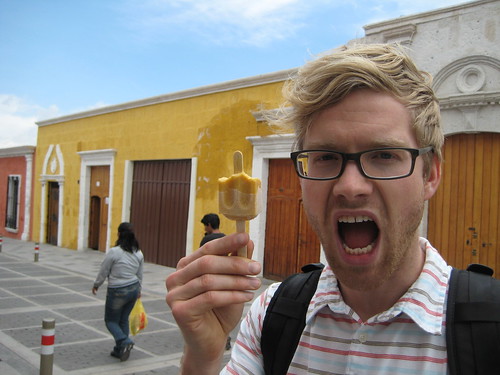
References
- Chapter I: Lucuma. 2005. Retrieved from http://www.biblioteca.udep.edu.pe.
- Hernandez, P. 2012. Bavaroise or lucuma mousse, retrieved from: http://www.enmicocinahoy.cl .
- Leon, J. 2000. Botany of tropical crops. San Jose: IICA.
- Solis Aguilar, D. 2015. Lucuma as an exotic high quality fruit imported into Portugal and the EU. Lisbon: Nova School of Business and Economics – Universidade Nova de Lisboa.
- Superfoods.pro. 2020. Lucuma the superfood that replaces sugar, retrieved from: http://www.superalimentos.pro/lúcuma.
- Super Foods Peru. 2020. Super Lucuma, retrieved from http: //www.perú.info.

Economist (Central University of Venezuela). Full professor and researcher attached to the “Edgar Abreu Olivo” Agrifood Research Center, Universidad de Los Andes. Doctor from the University of La Laguna (Spain). Award “One of the 10 most consulted authors of the Saber ULA university portal” (2005); prize in the III Essay Contest of the Central Bank of Venezuela BCvoz Economico, 2016, with the work “Theobroma cacao: transformation and consumption of the “food of the gods” in Venezuela and the world” (co-authored).
This post is also available in:
![]() Español (Spanish)
Español (Spanish)

